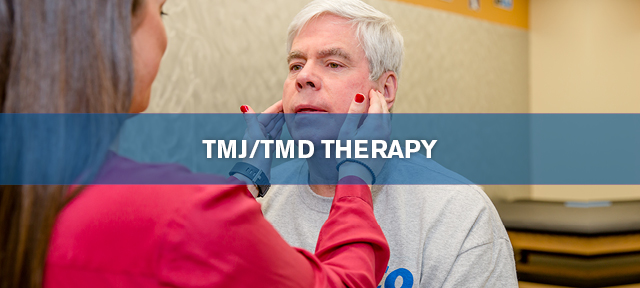TMD Pain Screener
Click the button below to find an Athletico TMD/TMJ therapist near you.
Find a TMD/TMJ therapist near you
Temporomandibular Disorder
The Temporomandibular Joint (TMJ) is used throughout the day to move the jaw, especially in biting and chewing, talking, and yawning. It is one of the most frequently used joints of the body.
Temporomandibular disorder, is a term that refers to acute or chronic pain or dysfunction of the TMJ. The disorder can result in significant pain and impairment.
Symptoms (patients may experience multiple symptoms):
- Headaches
- Upper neck pain
- Jaw pain
- Lower jaw pain
- Upper jaw pain
- Pain in the joint where the lower and upper jaw meet
- Clicking or locking of jaw
- Dislocated jaw
- Displaced disc
- Ringing in ears
- Dizziness/Feeling of imbalance
Physician, Dentist or Orthodontist May Diagnose:
- Temporomandibular Joint Disorder
- Myofascial Pain
- Osteoarthritis
- Rheumatoid arthritis
- Systemic Arthritis (i.e., Rheumatoid Arthritis, Ankylosing Spondylitis, etc.)
- Crohn’s Disease
- Ulcerative Colitis
- Reiter’s Disease
- Ehler’s-Danlos Syndrome or systemic hypermobility
Athletico Physical Therapy Options:
When working with an Athletico Physical Therapist, each patient is assessed to create an individualized treatment plan. For jaw pain, temporomandibular disorder physical therapy treatment can include:
- Manual Therapy
- Dry needling
- Anti-inflammatory modalities; application of heat or cold
- Posture correction
- Therapeautic exercises to strengthen and increase motion of the affected area
- Modifications to physical activity and diet
- Vestibular and balance exercises
- Additional options to decrease muscle tensions around jaw, upper neck, and face
Additional Care Options:
- Working with an Athletico Headache specialist

